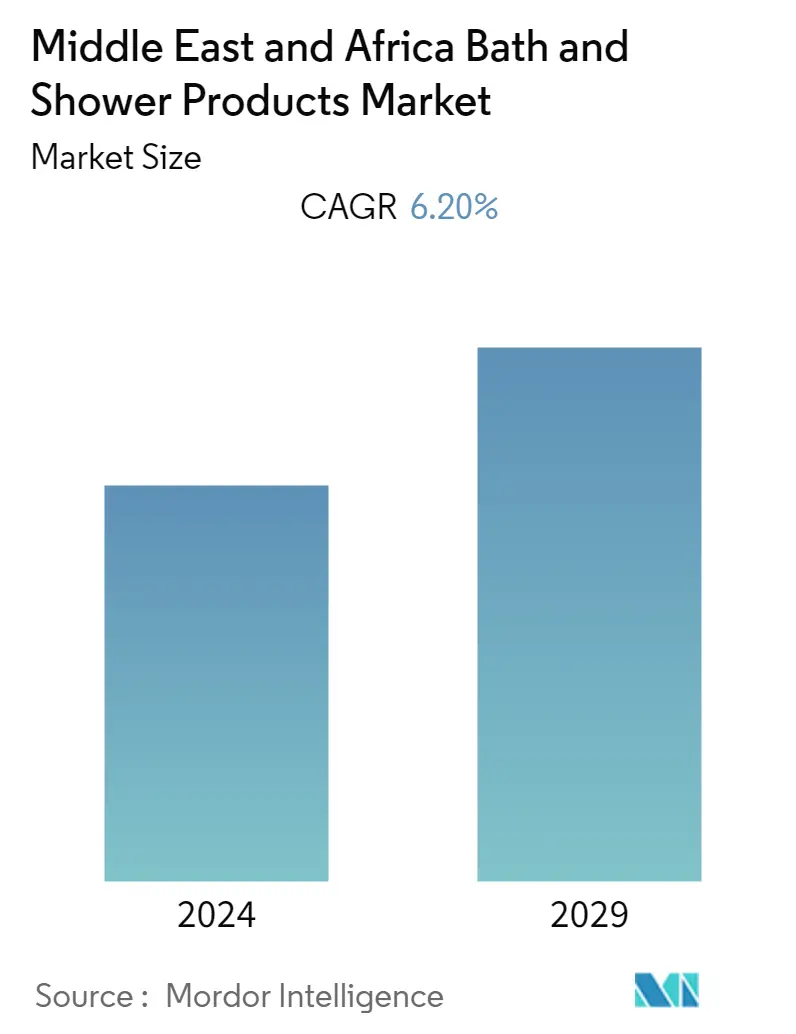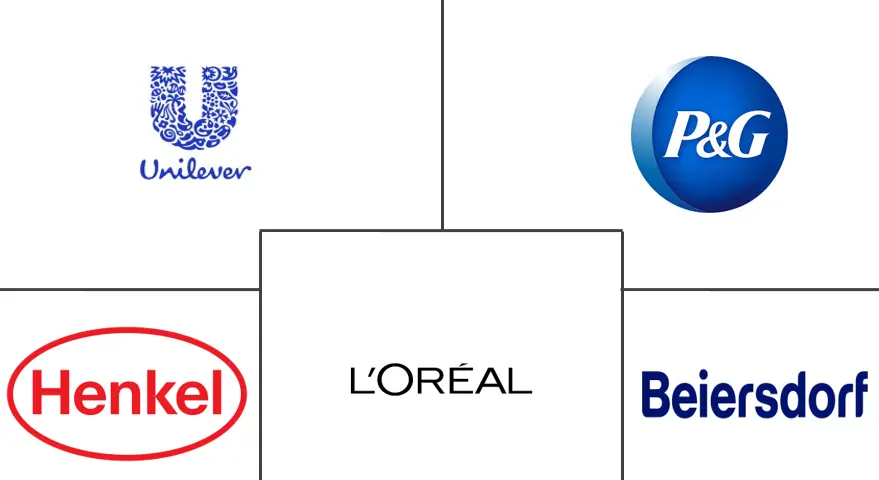Market Size of Middle East & Africa Bath and Shower Products Industry

| Study Period | 2019 - 2029 |
| Base Year For Estimation | 2023 |
| Forecast Data Period | 2024 - 2029 |
| Historical Data Period | 2019 - 2022 |
| CAGR | 6.20 % |
| Market Concentration | Medium |
Major Players
*Disclaimer: Major Players sorted in no particular order |
Middle-East and Africa Bath and Shower Products Market Analysis
The bath and shower products market in Middle-East and Africa is expected to register a CAGR of 6.2% over the forecast period of 2020 - 2025.
- Countries, such as Saudi Arabia and the United Arab Emirates, hold a significant share in the market. The extreme hot climate in the region remains the primary driver for the market to grow, wherein, increased hygiene practice among consumers and the growing demand for spa-like products at home has driven the bath product sales.
- Furthermore, the demand for halal-based products is still prominent to the middle and high-income groups of people. The increasing disposable income further is also augmenting the growth of the market.
Middle-East and Africa Bath and Shower Products Industry Segmentation
The bath and shower products market in Middle-East and Africa is segmented in terms of liquid bath products (segmented into bath foam/gel and bath oil/pearls), shower products (segmented into body wash/shower gel and other shower products), other bath products (segmented into bath salts/powder and other bath additives), soaps (segmented into bar soaps and liquid soaps), and distribution channel (segmented into convenience stores, department stores, online retail, pharmacies, specialist retailers, supermarkets and hypermarkets, and other distribution channels. By geography, the market is segmented into South Africa, Saudi Arabia, the United Arab Emirates, and the Rest of Middle-East & Africa.
| By Product Type | |
| Liquid Bath Products | |
| Shower Products | |
| Soaps | |
| Other Product Types |
| Geography | ||||||
|
Middle East & Africa Bath and Shower Products Market Size Summary
The Middle-East and Africa bath and shower products market is experiencing robust growth, driven by factors such as the region's hot climate and an increasing emphasis on personal hygiene. Countries like Saudi Arabia and the United Arab Emirates are key players in this market, where the demand for spa-like products at home is on the rise. The market is also witnessing a significant shift towards halal-based products, appealing to middle and high-income groups. This trend is further supported by rising disposable incomes, which are fueling the demand for these products. The presence of halal cosmetics in the region has encouraged manufacturers to focus on target-based sales, aligning with the economic growth and Islamic principles prevalent in the Middle East.
The market is characterized by a competitive landscape with established global brands like Procter & Gamble, Unilever, Henkel, L'Oreal, and L'Occitane holding significant market shares. These companies are actively engaging in new product development and expanding their distribution channels to strengthen their presence in the region. The emergence of specialist shops and the growth of online sales channels are expected to provide a substantial boost to the market. Fragrance plays a crucial role in the appeal of bath and shower products, with consumers, particularly Millennials and Generation Z, seeking products that offer sensory experiences and promote well-being. The market's future growth is anticipated to be driven by a combination of natural fragrances and those with historical significance, catering to the evolving preferences of consumers.
Middle East & Africa Bath and Shower Products Market Size - Table of Contents
-
1. MARKET DYNAMICS
-
1.1 Market Drivers
-
1.2 Market Restraints
-
1.3 Porter's Five Forces Analysis
-
1.3.1 Threat of New Entrants
-
1.3.2 Bargaining Power of Buyers/Consumers
-
1.3.3 Bargaining Power of Suppliers
-
1.3.4 Threat of Substitute Products
-
1.3.5 Intensity of Competitive Rivalry
-
-
-
2. MARKET SEGMENTATION
-
2.1 By Product Type
-
2.1.1 Liquid Bath Products
-
2.1.2 Shower Products
-
2.1.3 Soaps
-
2.1.4 Other Product Types
-
-
2.2 Geography
-
2.2.1 Middle East and Africa
-
2.2.1.1 South Africa
-
2.2.1.2 Saudi Arabia
-
2.2.1.3 United Arab Emirates
-
2.2.1.4 Rest of Middle-East and Africa
-
-
-
Middle East & Africa Bath and Shower Products Market Size FAQs
What is the current Middle East & Africa Bath and Shower Products Market size?
The Middle East & Africa Bath and Shower Products Market is projected to register a CAGR of 6.20% during the forecast period (2024-2029)
Who are the key players in Middle East & Africa Bath and Shower Products Market?
Procter & Gamble, Unilever, Loreal Group and L'Occitane International SA are the major companies operating in the Middle East & Africa Bath and Shower Products Market.

